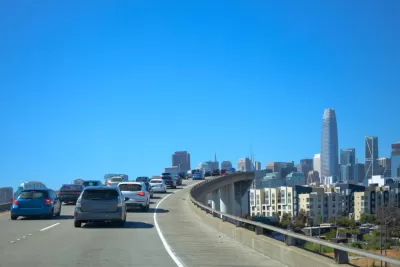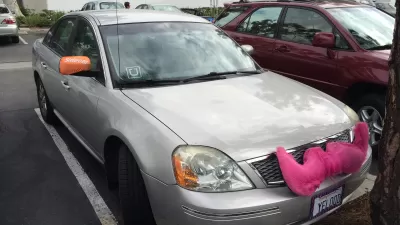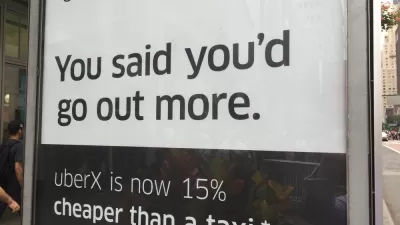A pair of new studies add to an emerging scientific model of the effect of transportation network companies like Uber and Lyft. The complication: One study reinforces earlier findings, and the other contradicts.

A new study by the San Francisco County Transportation Authority takes inventory of San Francisco's traffic volumes, specifically as the first study of the effect of transportation network companies (also referred to as ride-hailing companies) in the city.
"The gist is that while ride-hailing companies have contributed to the increase in traffic congestion in San Francisco, jobs and population growth also play a major role," according to an article by Megan Rose Dickey sharing the findings of the analysis.
That might be a charitable portrayal, however, of the effect of transportation network companies. The figures for the impact of transportation network companies between 2010 and 2016, as reported by Dickey:
- 51 percent of the increase in daily vehicle hours of delay
- 47 percent of the increase in vehicle miles traveled
- 55 percent of the average speed decline
- 25 percent of total vehicle congestion citywide
That's more than a significant impact on traffic, and one that reflects the findings of an earlier study in Seattle.
Another recently released study, however, complicates the picture of Uber-and-Lyft-driven congestion. A study published recently in the Journal of Urban Economics finds that Uber has increased the use of public transit by as much as five percent, with results varying by the size of the metropolitan area. Those findings directly contradict earlier studies that found evidence of transportation network companies cannibalizing rides from public transit agencies.
FULL STORY: Uber and Lyft are responsible for about half of SF’s rise in traffic since 2010, SFCTA says

Alabama: Trump Terminates Settlements for Black Communities Harmed By Raw Sewage
Trump deemed the landmark civil rights agreement “illegal DEI and environmental justice policy.”

Planetizen Federal Action Tracker
A weekly monitor of how Trump’s orders and actions are impacting planners and planning in America.

Why Should We Subsidize Public Transportation?
Many public transit agencies face financial stress due to rising costs, declining fare revenue, and declining subsidies. Transit advocates must provide a strong business case for increasing public transit funding.

Understanding Road Diets
An explainer from Momentum highlights the advantages of reducing vehicle lanes in favor of more bike, transit, and pedestrian infrastructure.

New California Law Regulates Warehouse Pollution
A new law tightens building and emissions regulations for large distribution warehouses to mitigate air pollution and traffic in surrounding communities.

Phoenix Announces Opening Date for Light Rail Extension
The South Central extension will connect South Phoenix to downtown and other major hubs starting on June 7.
Urban Design for Planners 1: Software Tools
This six-course series explores essential urban design concepts using open source software and equips planners with the tools they need to participate fully in the urban design process.
Planning for Universal Design
Learn the tools for implementing Universal Design in planning regulations.
Caltrans
Smith Gee Studio
Institute for Housing and Urban Development Studies (IHS)
City of Grandview
Harvard GSD Executive Education
Toledo-Lucas County Plan Commissions
Salt Lake City
NYU Wagner Graduate School of Public Service





























